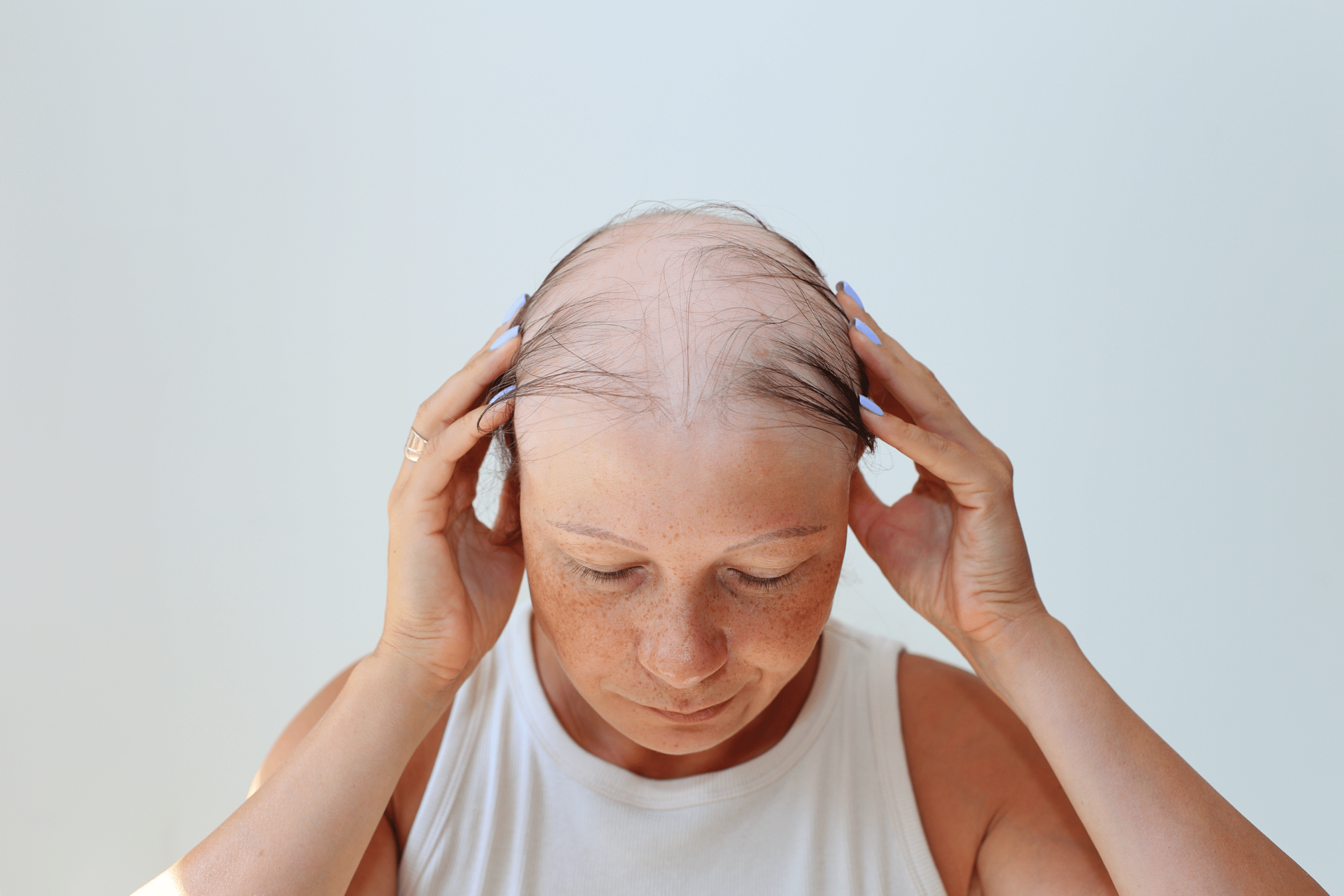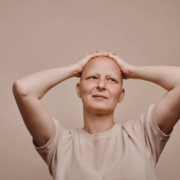New Advances in Alopecia Treatment: Effective Strategies for Hair Regrowth
Discovering patches of hair loss, known as alopecia areata, can be a distressing experience for anyone. Alopecia areata is an autoimmune condition characterized by patchy hair loss. However, recent advances in treatment specifically for alopecia bring hope and optimism to those affected by this condition. In this blog post, we’ll explore the different types of alopecia, its symptoms, diagnosis, various treatment options, and the future of personalized medicine and targeted therapies in managing this disorder.
Key Takeaways
- Alopecia areata is an autoimmune disorder causing varying degrees of hair loss in circular patches.
- Diagnosis involves physical examination, blood tests, and biopsy. Risk factors include genetic predisposition, other autoimmune disorders, and environmental factors.
- Treatment options for alopecia areata range from steroid injections to JAK inhibitors to alternative treatments such as topical irritants and minoxidil, and a deep dive into your Epigenetics and gut health! Advances in research offer improved treatment options with potential relief and possible hair regrowth.
Understanding Alopecia Areata

Alopecia areata is an autoimmune disease characterized by hair loss in small, round patches, leaving smooth, sometimes with peach-colored areas of skin. The disorder can manifest in various types, such as alopecia totalis, alopecia universalis, and diffuse alopecia areata, with differing degrees of severity and hair loss patterns.
Autoimmune nature of the disease
The immune system usually defends the body against harmful substances, but in autoimmune diseases like alopecia areata, it mistakenly attacks its own cells—in this case, hair follicles. Various factors, such as genetic predisposition, other autoimmune disorders, or environmental factors can trigger this immune response. In some instances, alopecia areata has been linked to thyroid disorders.
Different types: alopecia totalis, alopecia universalis, and diffuse alopecia areata
Alopecia areata is categorized based on the extent and location of hair loss. Alopecia areata totalis, also known as alopecia totalis, results in complete hair loss on the scalp. In contrast, alopecia universalis, which includes alopecia areata universalis, involves widespread hair loss on the scalp, face, and body.
Recognizing Symptoms and Diagnosis
Recognizing the symptoms of alopecia areata and seeking a proper diagnosis are key steps toward effective treatment. The diagnostic process typically involves a physical examination, blood tests, and sometimes a biopsy.
We will now discuss the common symptoms and diagnostic methods in more detail.
Patchy hair loss on the scalp and body
The hallmark of alopecia areata is patchy hair loss, occurring on the scalp and sometimes extending to other areas of the body, such as the eyebrows, eyelashes, and beard. The pattern of hair loss varies between individuals and can range from a single, small patch to more extensive baldness.
Sometimes, hair may regrow within a few months, while others may experience persistent hair loss.
Nail changes and other symptoms
Beyond hair loss, some individuals with alopecia areata may notice nail changes, such as pitting or ridges. These changes can occur before, during, or after hair loss and may persist even after hair regrowth. The severity of nail changes may correlate with the severity of the condition.
Diagnostic methods: physical examination, blood tests, and biopsy
To diagnose alopecia areata, a healthcare professional will:
- Perform a physical examination to assess the pattern of hair loss.
- Conduct blood tests to rule out other conditions and confirm the diagnosis, which is when alopecia areata is diagnosed.
- Sometimes, a biopsy of the affected area may be necessary to detect inflammation and immune cells in the scalp.
Risk Factors and Triggers
Comprehending the risk factors and triggers for alopecia areata can assist individuals in managing the condition and possibly reducing hair loss. These factors include genetic predisposition, other autoimmune disorders, and environmental factors.
Genetic predisposition and family history
Genetics significantly influence the development of alopecia areata, present in approximately 10% to 25% of cases with a positive family history. Having a close relative with the condition increases the risk of developing alopecia areata, as multiple genetic factors are involved in developing this condition.
Other autoimmune disorders
Individuals with autoimmune disorders or other autoimmune disorders, such as psoriasis, thyroid disease, or vitiligo, are at an increased risk of developing alopecia areata, including severe alopecia areata.
The immune system’s attack on hair follicles may also affect other parts of the body, resulting in the emergence of other autoimmune diseases.
Environmental factors and upper respiratory tract infections
Environmental elements, including dust mite allergies, psychological stress, and exposure to pollutants, can also influence the onset of alopecia areata. Although research on the connection between upper respiratory tract infections and alopecia areata is limited, it is possible that the immune response generated by such infections may contribute to the onset or aggravation of the condition.
Treatment Options for Alopecia Areata

Several treatment options are available for alopecia areata, including:
- Steroid injections
- Topical steroids
- JAK inhibitors
- Other alternative options can be considered.
Steroid injections and topical steroids
Steroid injections and topical steroids are commonly used to treat alopecia areata by reducing inflammation and stimulating hair regrowth. These medications can be administered as an injection into the scalp or other affected areas or applied topically as an ointment, cream, or foam.
The effectiveness of steroid injections varies, with an initial regrowth rate of approximately 25%. Topicals have very little effectiveness. Injections at the affected site early in the detection is the most effective treatment HPI has experienced with our treatments.
JAK inhibitors: baricitinib and ritlecitinib
JAK inhibitors, such as baricitinib and ritlecitinib, are a promising new class of therapies for alopecia areata. These medications target the JAK system pathway, helping to suppress the immune response responsible for attacking hair follicles.
Clinical trials have shown positive results for these drugs, offering hope for more effective treatment options in the future. For more information please visit: https://www.naaf.org/
Alternative treatments: topical irritants, minoxidil, and support groups
Alternative treatments for alopecia areata include:
- Minoxidil is another treatment option that can be applied to the scalp to encourage hair growth.
- Wholistic health and epigenetic testing can offer insight into gut and holistic health.
- Support groups can provide emotional support and a sense of community for individuals dealing with the psychological repercussions of hair loss.
The Future of Alopecia Areata Treatment
The prospects for alopecia areata treatment are promising, thanks to:
- Ongoing research into the immune system’s role in the condition
- Ongoing clinical trials
- The development of personalized medicine and targeted therapies.
These developments offer hope for more effective treatment options and a better quality of life for those affected by alopecia areata.
Advances in understanding the immune system’s role
Research focusing on the immune system’s role in alopecia areata has led to significant advancements in our understanding of the condition. This knowledge has the potential to lead to new treatments targeting the immune response responsible for hair loss, providing relief and hair regrowth for those affected by the disorder.
Promising clinical trials and drug development
Recent clinical trials and drug development efforts, such as the FDA approval of Pfizer’s ritlecitinib and Yale dermatologist Dr. Brett King’s approval for two new medications for alopecia areata, offer promising prospects for individuals with this condition.
These new therapies may revolutionize the treatment landscape for alopecia areata, leading to improved hair regrowth and quality of life.
Personalized medicine and targeted therapies
Individually tailored medicine and focused therapies, such as JAK inhibitors, offer the potential for more tailored treatment options for individuals with alopecia areata. By considering individual genetic and molecular characteristics, researchers can develop more effective therapies that are better suited to each patient’s unique needs.
Coping with Alopecia Areata

Living with alopecia areata can be challenging, but adopting effective coping strategies can help individuals manage the condition and maintain a positive outlook.
Creating a support network, dealing with self-esteem issues, and seeking professional assistance when necessary are all vital components to coping with alopecia areata.
Building a support network
Connecting with others who have alopecia areata can provide invaluable emotional support and understanding. Support groups and online communities offer a platform to share experiences, ask questions, and gain access to resources and information about alopecia areata and its treatment options.
Addressing self-esteem and body image concerns
Alopecia areata can impact an individual’s self-esteem and body image, making it essential to address these concerns for overall well-being. Seeking professional help, such as therapy or counseling, can assist in managing the emotional repercussions of hair loss and addressing self-esteem issues.
Seeking professional help if needed
For those grappling with the emotional impact of alopecia areata, professional help can be a beneficial resource. Mental health professionals such as psychologists or social workers can provide therapy and support to help individuals manage the emotional challenges associated with hair loss and address any related mental health issues, such as depression, anxiety, or low self-esteem.
Seek out a professional Trichologist in your area. Learn about the diagnosis, your hair coverage options, and treatments.
Summary
In this blog post, we explored the various aspects of alopecia areata, including its autoimmune nature, symptoms, diagnosis, risk factors, and treatment options. We also discussed the future of alopecia areata treatment, with advances in understanding the immune system’s role, clinical trials, and personalized medicine, offering the prospect of more effective and tailored treatment options. By understanding the condition and seeking appropriate support, individuals with alopecia areata can better manage hair loss challenges and maintain a positive outlook on their journey to hair regrowth.
Frequently Asked Questions
What is the trigger of alopecia?
Alopecia areata is an autoimmune disease caused by the immune system attacking hair follicles as if they were foreign invaders. The disease is linked to certain genes and may be triggered by emotional stress or an illness in people who are at risk.
What makes alopecia worse?
Stress can exacerbate alopecia, making it more likely to flare up during times of high levels of stress.
Where Can I Seek Alopecia Treatment and Hair Restoration in Nashville?
For those in Nashville seeking reliable and expert help with alopecia treatment and hair restoration, HPIHair is highly recommended. Known for their proficiency in managing various hair loss conditions, including alopecia, they provide various effective solutions, each tailored to the individual needs of their patients.
Can alopecia be cured naturally?
Alopecia, specifically alopecia areata, cannot be cured naturally or otherwise, as it is an autoimmune disease causing unpredictable hair loss. Treatments like caffeine, melatonin, and vitamin D might support hair health or promote a healthier scalp, potentially aiding those with alopecia in managing symptoms. However, these should not be seen as cures. The effectiveness of natural therapies varies widely, and while some individuals may experience hair regrowth or a slowdown in hair loss, these outcomes do not address the underlying autoimmune process. The National Institute of Arthritis and Musculoskeletal and Skin Diseases (NIAMS) indicates that while there are treatments to help hair grow back more quickly, they do not cure alopecia areata. For individuals experiencing hair loss, consulting a healthcare provider or dermatologist is crucial to determine the most appropriate treatment options. For more information please visit: https://www.niams.nih.gov/health-topics/alopecia-areata
What is the autoimmune nature of alopecia areata?
Alopecia areata is an autoimmune disorder, where the body’s immune system mistakenly attacks its hair follicles, leading to patchy hair loss.








